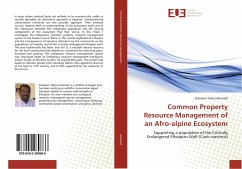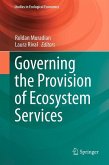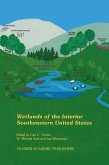In areas where national parks are unlikely to be economically viable or socially desirable, an alternative approach is required. Community-led conservation initiatives are one possible approach. Their eventual success requires both an understanding of the ecosystem itself and of the interaction between the indigenous population and the varying components of the ecosystem that they utilise. In this thesis I investigate the indigenous common property resource management system in the Guassa area of Menz in the central highlands of Ethiopia, and the consequences of resource utilisation by the community on the populations of rodents, and of the critically endangered Ethiopian wolf. The area traditionally has been, and still is, a valuable natural resource for the local community that depend on it primarily for thatching grass, firewood and grazing. The indigenous resource management system was structured under an indigenous resource management institution, known locally as the Qero system, for around 400 years. The system was based on descent groups from founding fathers who agreed on division of the land in 17th century, and further supported by the authority of the church.
Bitte wählen Sie Ihr Anliegen aus.
Rechnungen
Retourenschein anfordern
Bestellstatus
Storno








